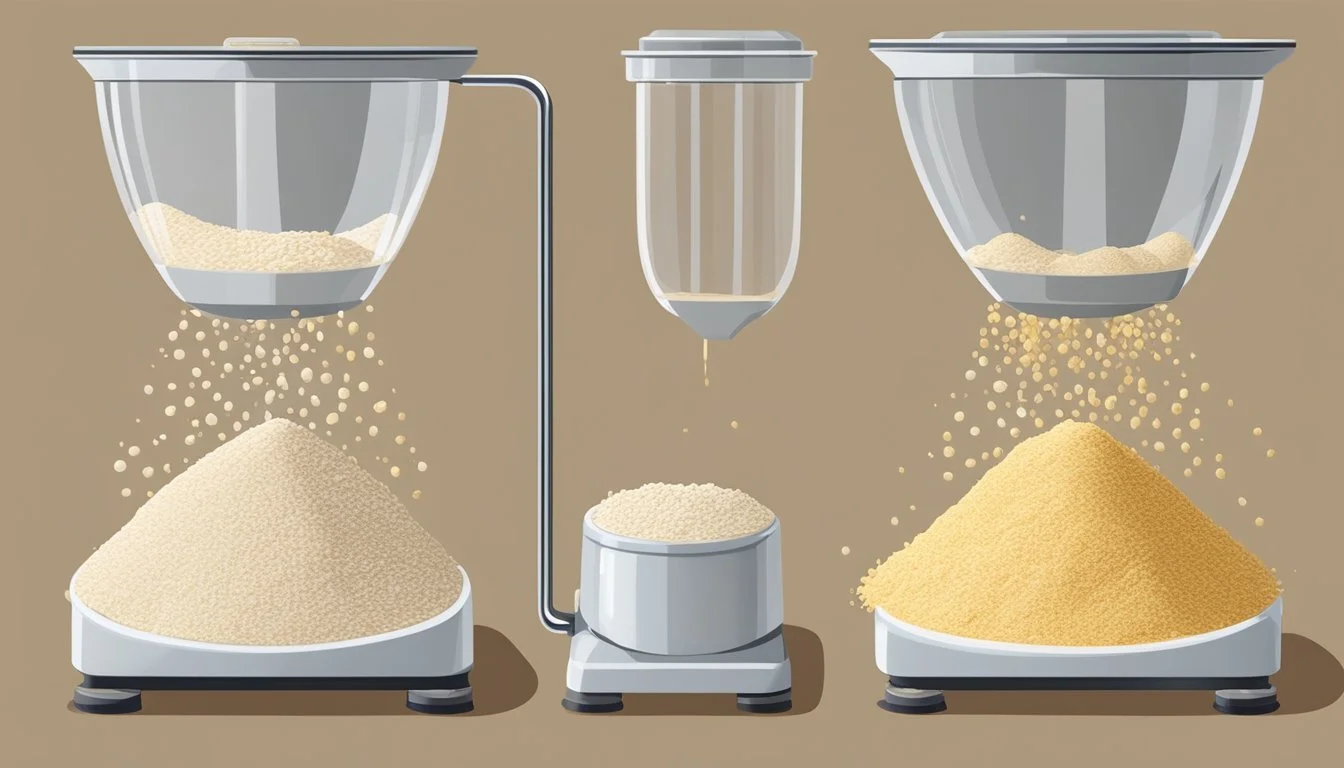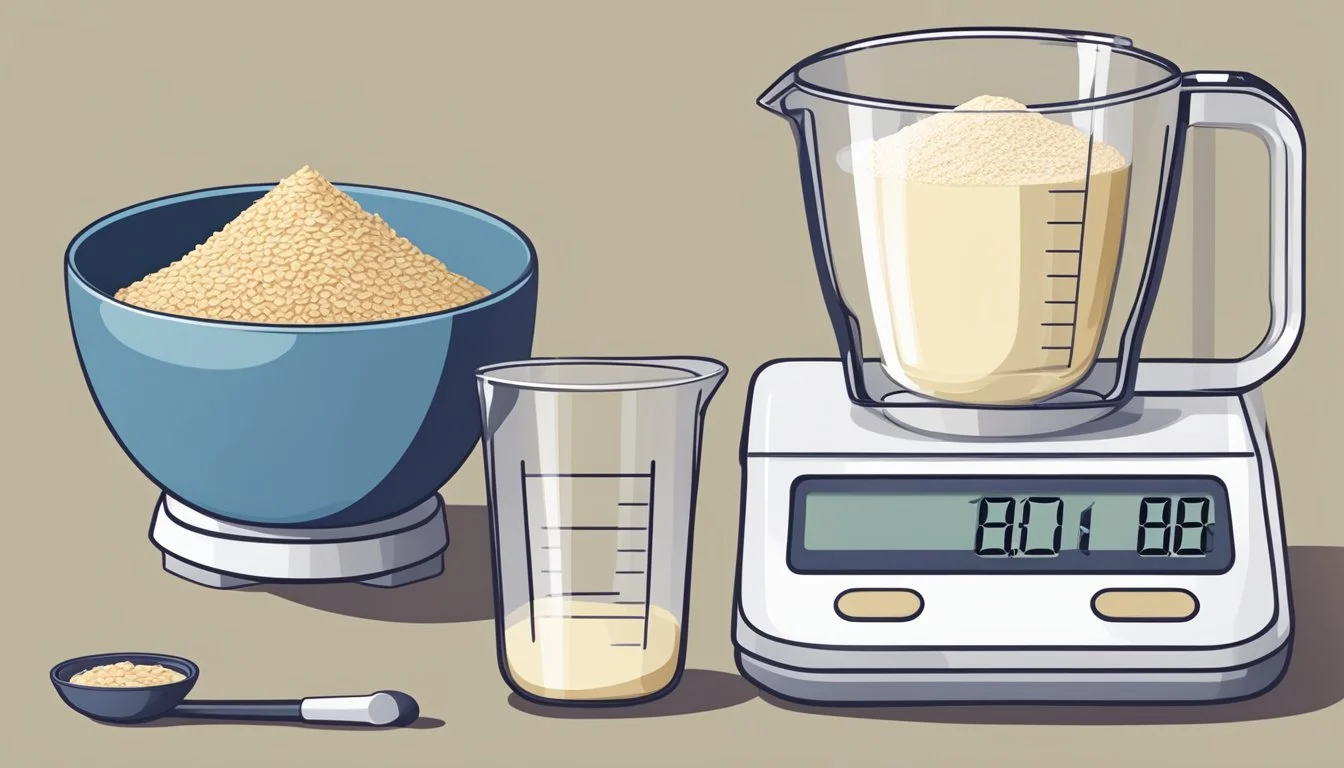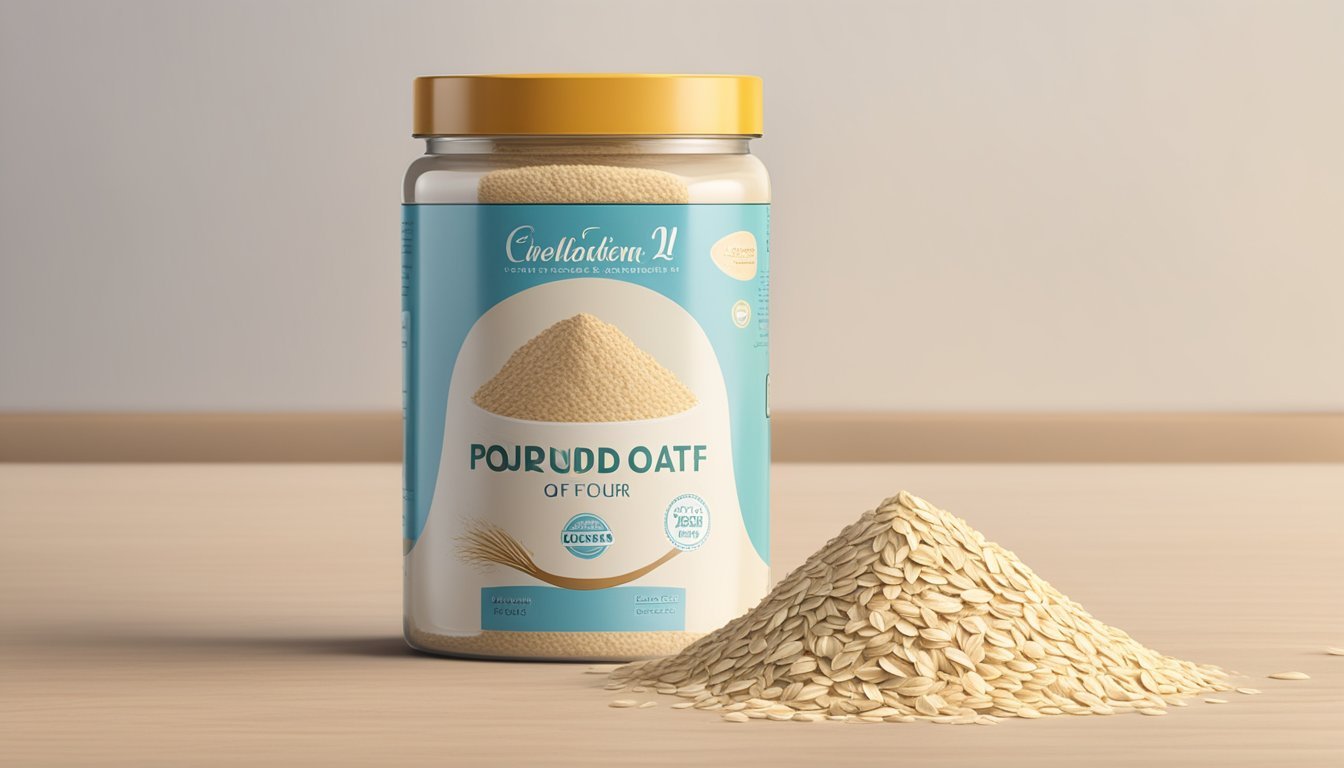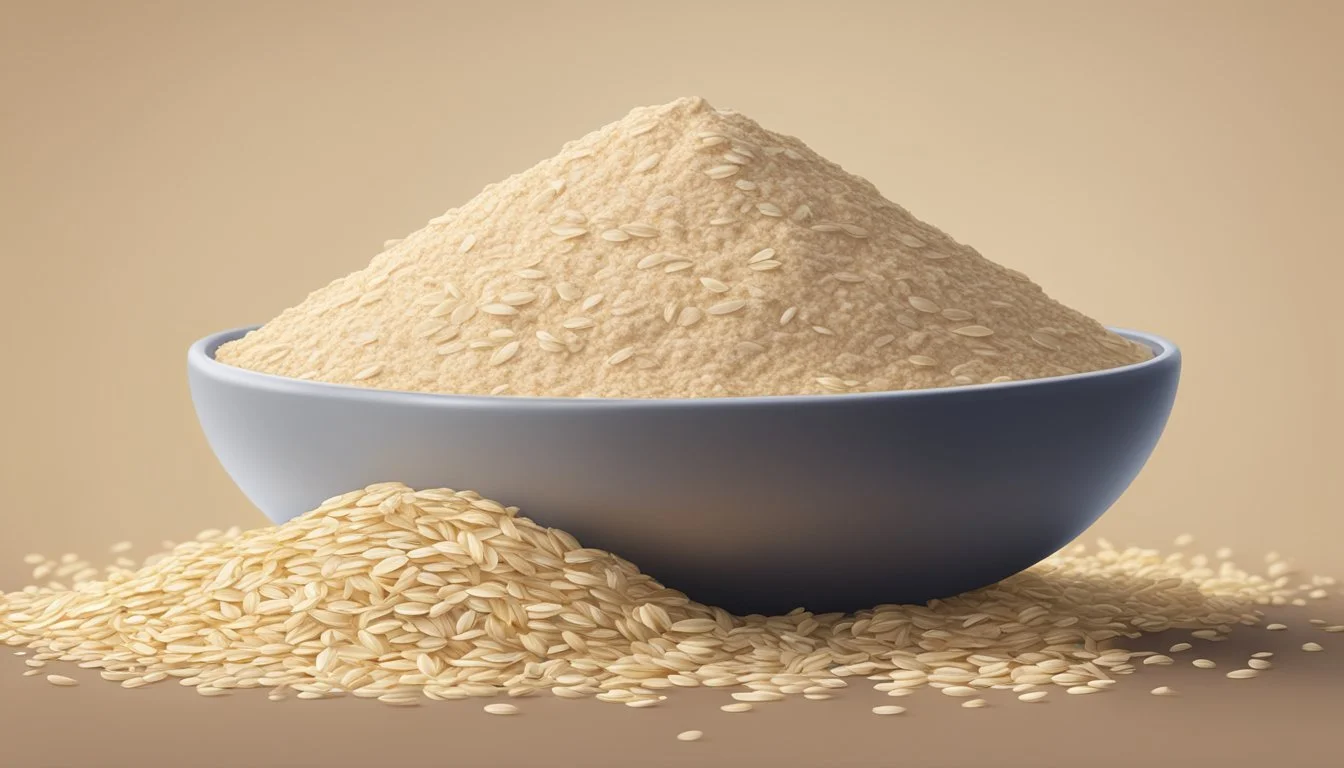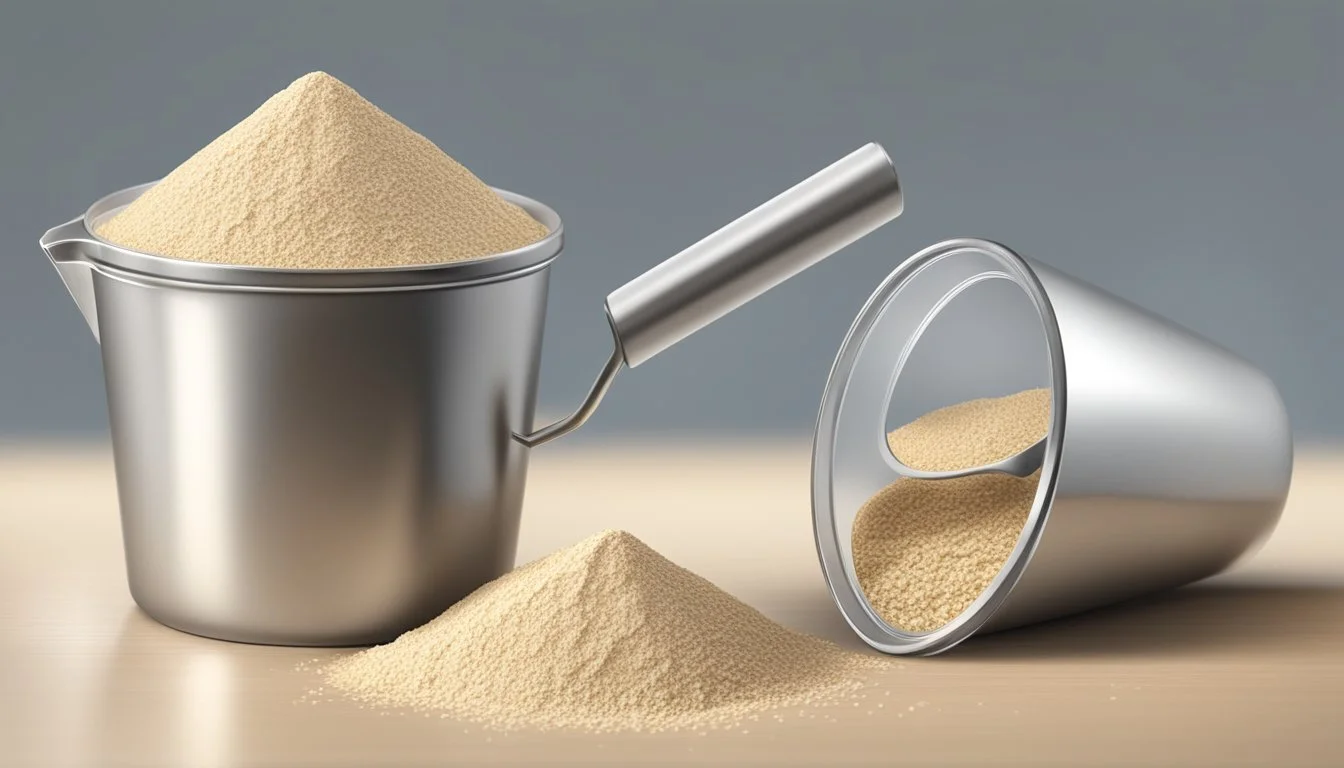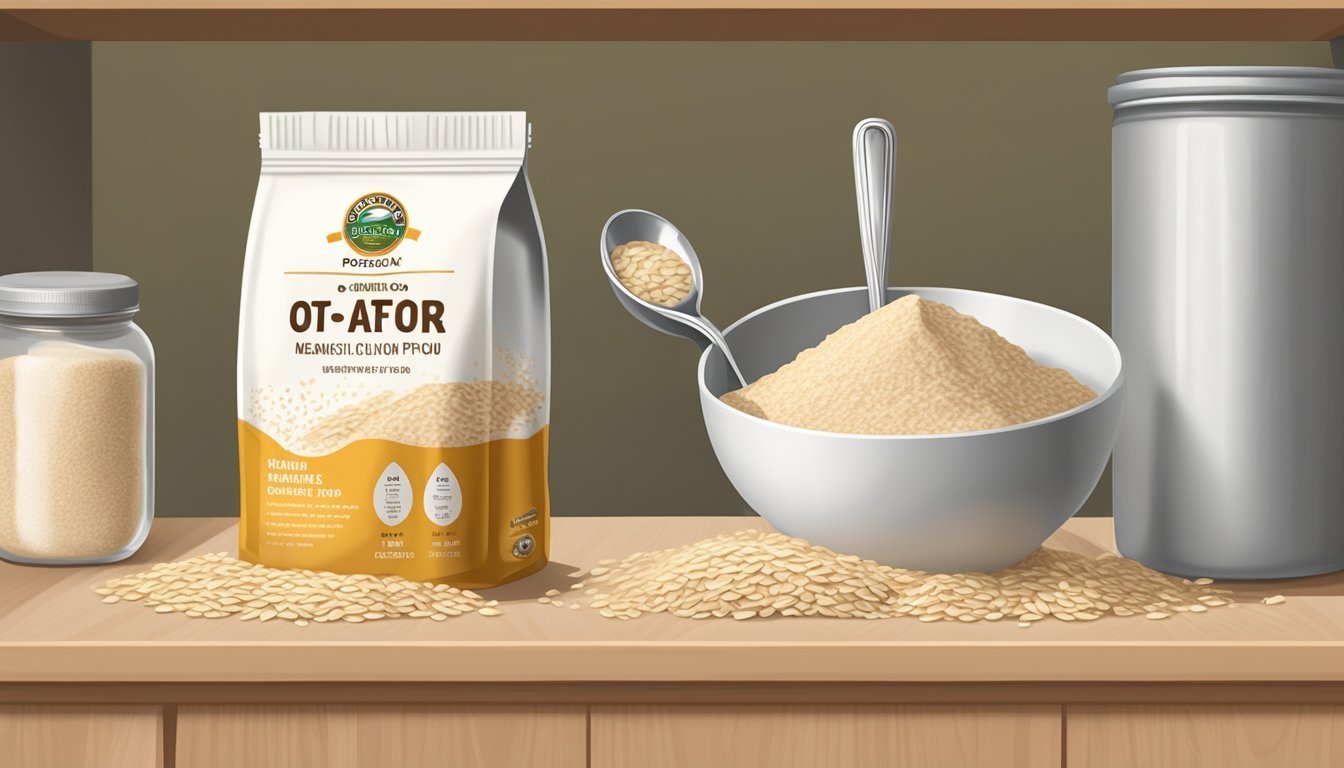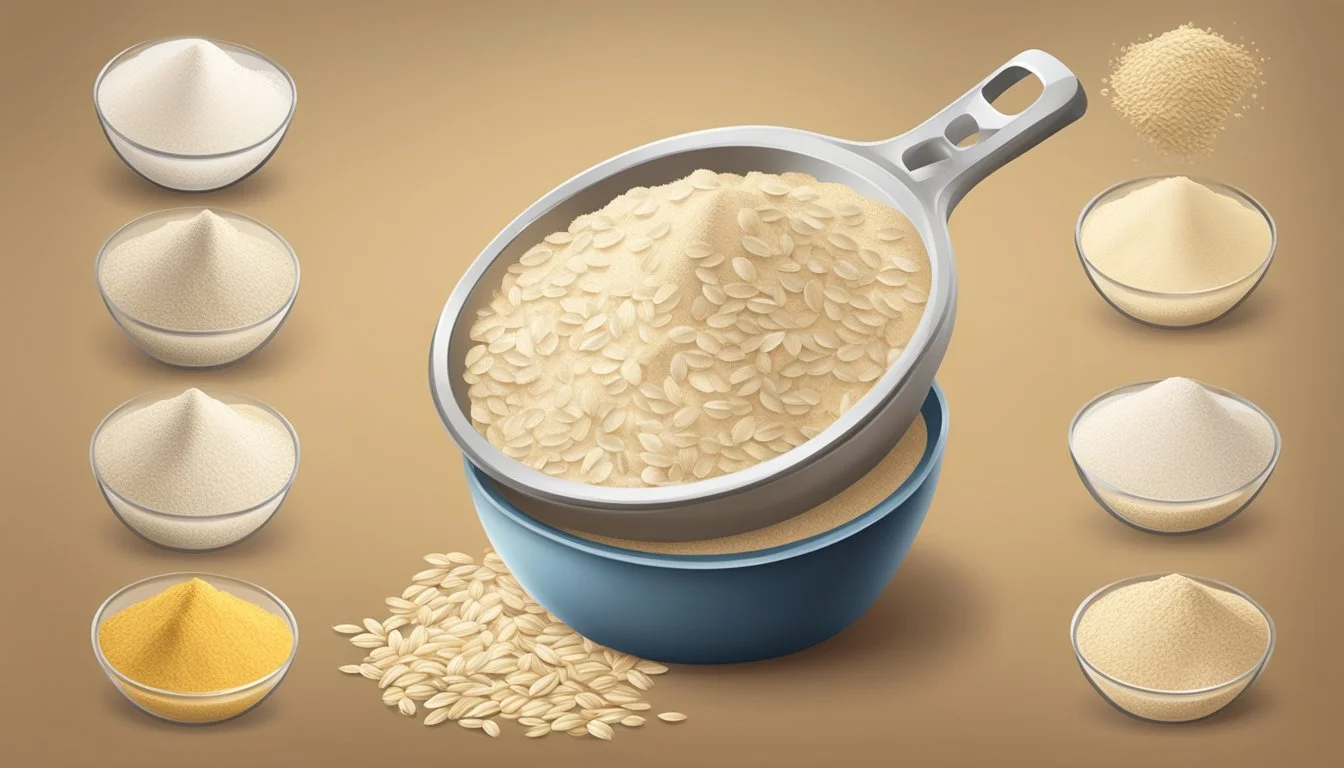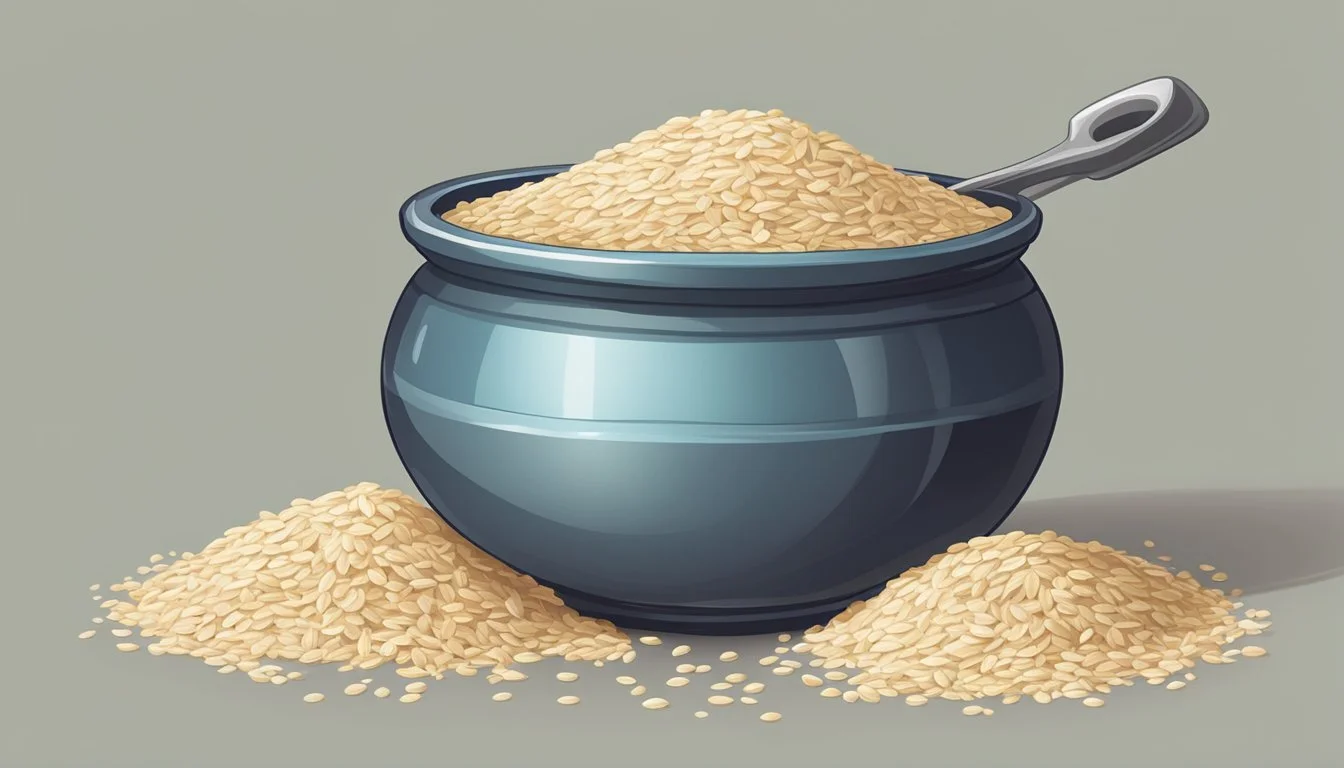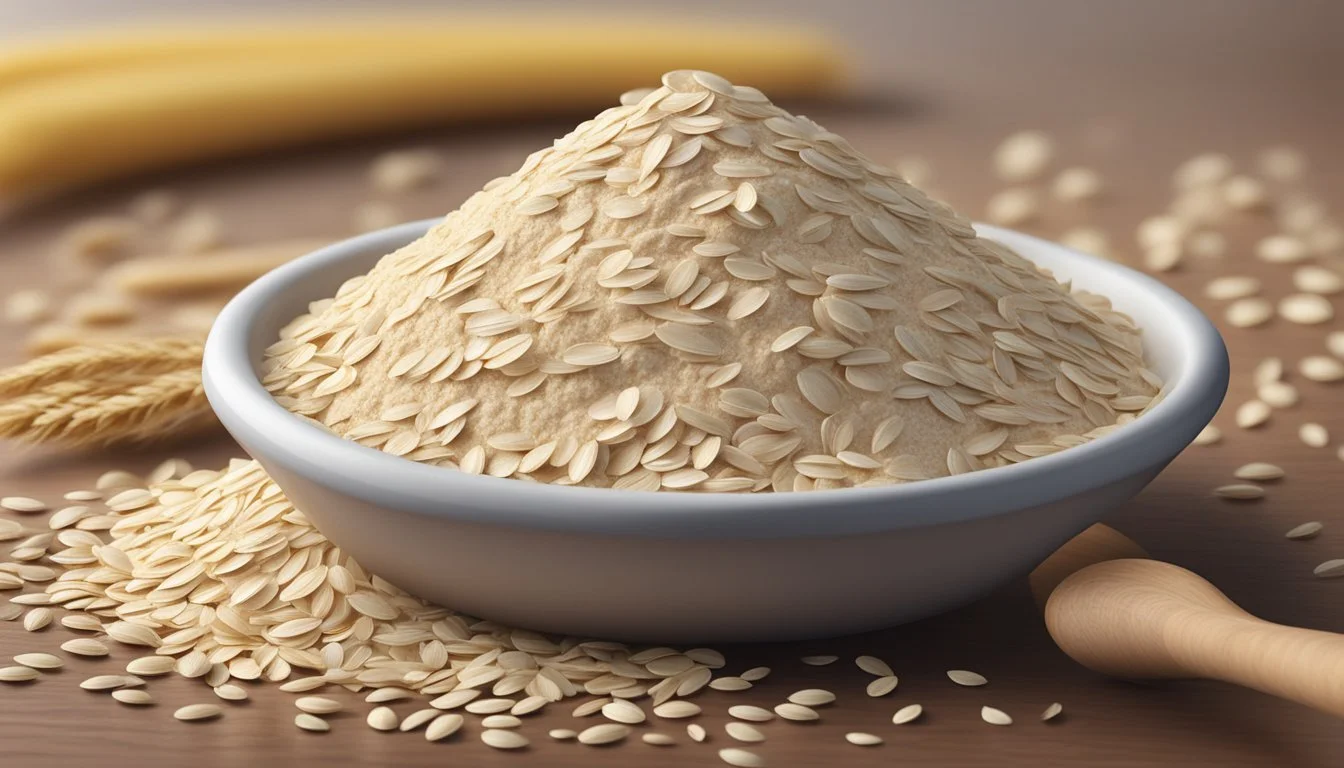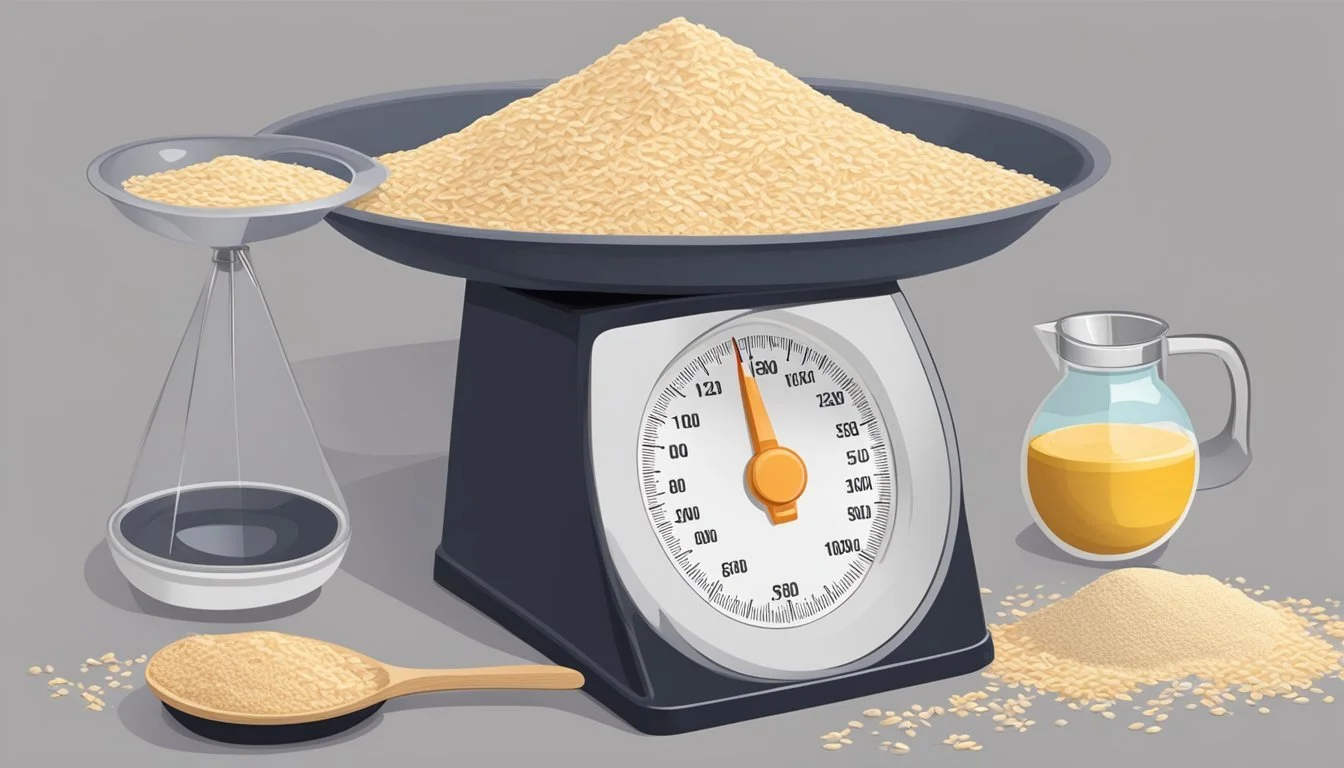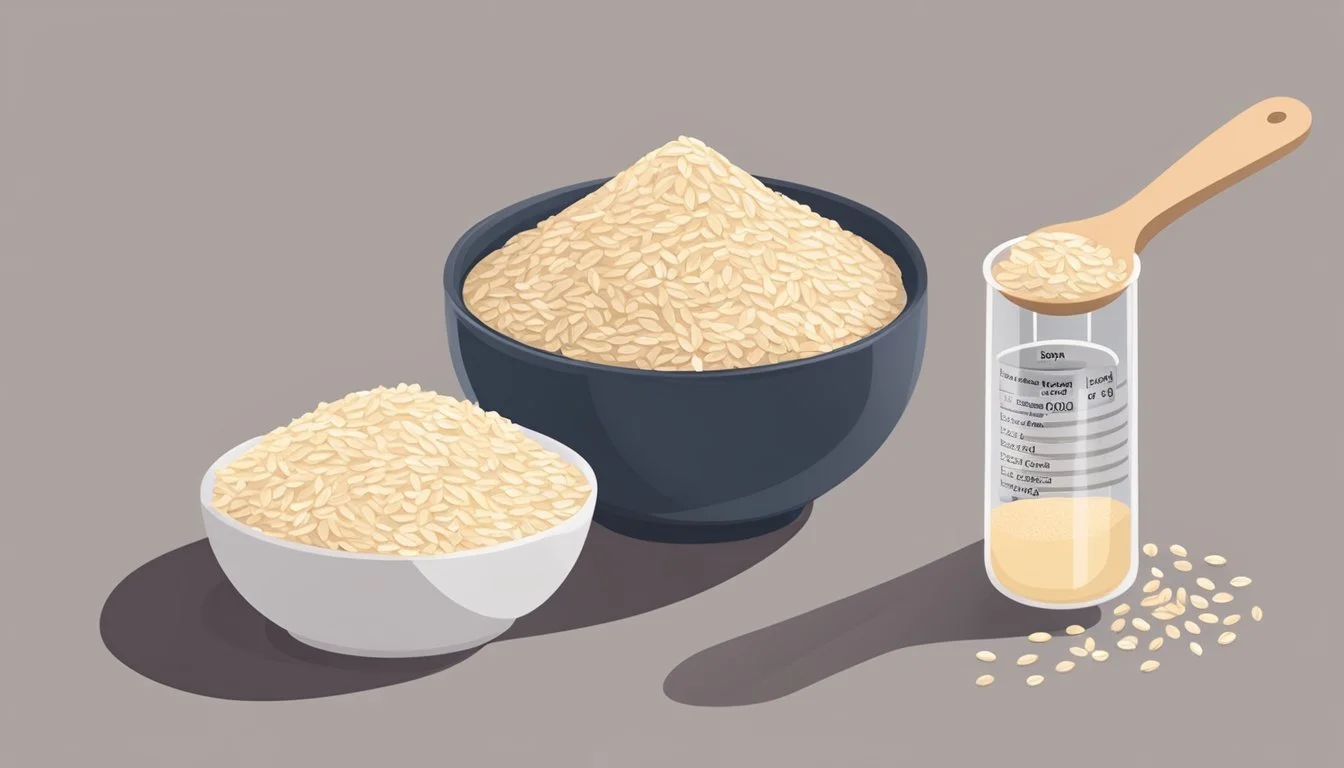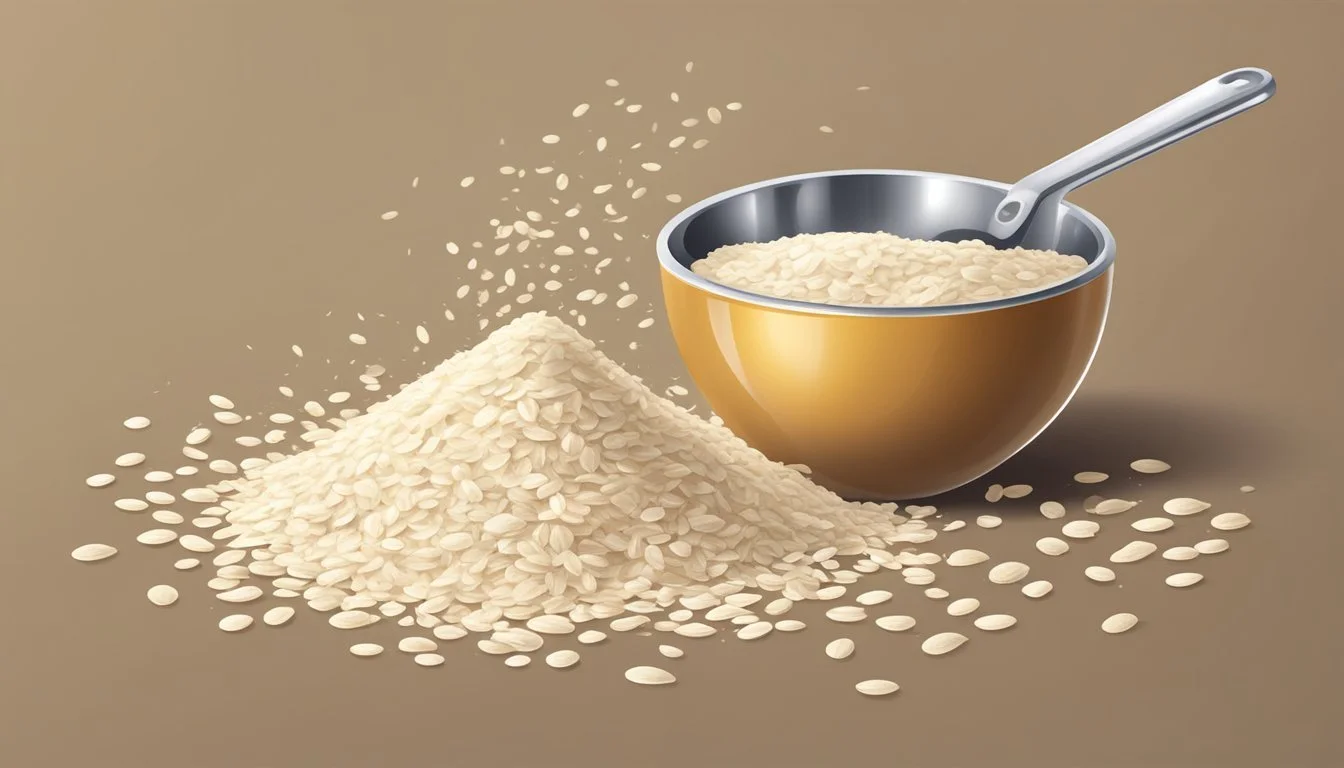How Many Tablespoons in a Pound of Oat Flour
Accurate Measurement Guide
When working with oat flour in the kitchen, whether for culinary education or diet planning, precision is key. One pound of oat flour equates to approximately 80.64 tablespoons. This conversion is particularly useful for those who prefer or require weight measurements in their cooking or baking processes, as it bridges the gap between volume and weight—a common challenge in the culinary world.
Understanding this conversion is not only helpful for recipe development but also essential when substituting oat flour for other types of flour. As many recipes call for volume measurements such as cups or tablespoons, knowing that a pound of oat flour converts to a quantifiable number of tablespoons allows for accurate adjustments and consistent results.
The task of converting oat flour from pounds to tablespoons appears straightforward, yet it's an important detail that can affect the texture and structure of baked goods. Precision ensures that recipes turn out as intended, and familiarity with these conversions allows bakers and chefs to scale recipes up or down with confidence.
Understanding Oat Flour
Oat flour is a whole grain flour made by grinding oats into a fine powder. There are various types of oats, including steel-cut oats, rolled oats (also known as old-fashioned oats), and quick-cooking oats. Each type differs in processing and thus results in variations in texture and cooking time when made into flour.
The weight and density of oat flour can vary, but typically, one pound of oat flour is equivalent to approximately 3.63 to 4 cups. This depends on factors such as the grind's fineness and any settling that may have occurred. Oat flour is prized for its nutritional benefits, as it's rich in protein and fiber, which can contribute to satiety and offer long-term energy.
Common in health-focused diets, oat flour provides a good alternative to wheat flour due to its gluten-free nature. However, individuals with celiac disease or severe gluten intolerance should opt for certified gluten-free oats to avoid cross-contamination with grains that contain gluten. Here's a brief comparison in terms of composition:
Type of Oats Protein Fiber Steel-Cut Oats High High Rolled/Old-Fashioned Oats Moderate High Quick-Cooking Oats Moderate Moderate
Oat flour's mild, slightly nutty flavor complements a variety of recipes. It is a versatile ingredient suited for baking and cooking, offering a nutritious and delicious alternative for those looking to incorporate more whole grains into their diet.
Measuring Oat Flour
Accurate measurement in cooking is critical for consistency and desired results, especially when converting weight to volume and vice versa. The following subsections discuss the conversion of oat flour from pounds to tablespoons, necessary tools for measuring, and differences in measurement units.
Weight to Volume Conversion
The key to converting weight to volume for oat flour lies in understanding that one pound of oat flour is equivalent to approximately 96 tablespoons. This is based on the fact that one tablespoon of oat flour typically weighs around 0.37 ounces or 10.5 grams. A pound, which contains 16 ounces, can therefore be converted using the formula:
[ \text{Tablespoons} = \frac{\text{Pounds} \times 16}{\text{Ounce per tablespoon}} ]
Tools for Accurate Measuring
A kitchen scale is essential for precise measurement of oat flour, offering readings in both imperial (ounces) and metric (grams, kilograms) units. Kitchen scales provide more accurate results than volume measurements (cups, tablespoons), which can vary due to the flour's density or how it is packed.
For volume measurements, using standardized measuring spoons and ensuring they are leveled off can improve accuracy. Alternatively, a blender or food processor can be used to create oat flour from oats, affecting the volume produced.
Calculating Tablespoons in a Pound
To determine the number of tablespoons in a pound of oat flour:
Compute the total ounces in a pound (16 ounces).
Divide by the weight of one tablespoon of oat flour in ounces (approximately 0.37 ounces).
This yields the formula:
[ \text{Tablespoons in a pound} \approx \frac{16}{0.37} \approx 43 \text{tablespoons} ]
Differences in Measurement Units
Understanding the distinctions between US customary and imperial units is important. Though similar, these systems differ slightly; for example, a US tablespoon is approximately 14.8 milliliters, while the imperial tablespoon is 17.7 milliliters. In cooking, sticking to one measurement system and using the appropriate tools calibrated to that system ensures accuracy.
Incorporating Oat Flour into Recipes
When using oat flour, one must consider its unique properties and how it interacts with other ingredients. It carves its niche in healthier cooking, boasting a gluten-free profile and potentially enriching recipes with a higher nutritional content.
Baking with Oat Flour
Oat flour bakes differently than all-purpose or wheat flour as it lacks gluten. Gluten contributes to the elasticity and rise in traditional baked goods. Recipes will need adjustment to maintain structure — typically requiring more binding agents like eggs. For instance:
Cakes and Muffins: They often require a 1:1.33 replacement ratio; for every cup of all-purpose flour, use approximately 1 1/3 cups of oat flour.
Cookies: A direct substitute can be used, but the texture may be softer and chewier.
Breads and Yeast Leavened Recipes: Adding gluten, via wheat flour or a gluten additive, may be necessary to achieve the desired rise and crumb.
Alternative Uses for Oat Flour
Oat flour isn't limited to baking. It's versatile and can be a substitute for wheat flour in:
Coatings for Cooking: Use oat flour for breading on chicken, fish, or vegetables to create a crispy crust.
Thickening Agent: It can be used to thicken soups and sauces, though it may require more liquid since it absorbs more moisture than other flours.
Oat Flour's Role in Healthier Cooking
Switching to oat flour supports a healthier cooking approach:
Gluten-Free Diets: It's inherently gluten-free, making it a staple in such meal plans.
Nutritional Advantages: Oat flour is rich in protein and fiber, which can assist in lowering cholesterol. It often retains more whole grain benefits compared to refined flours.
Lower Calories: It can reduce caloric intake in recipes when measured correctly against all-purpose flour.
Making Homemade Oat Flour
Making oat flour at home is a straightforward process that requires minimal equipment and ingredients. The essential tool needed is a high-speed blender or food processor, capable of grinding the oats into a fine powder.
The Basic Steps
Select Your Oats: Start with either rolled oats or steel cut oats. Rolled oats are traditional and blend easily, while steel cut oats yield a somewhat coarser flour.
Measure the Oats: For consistency in recipes, use a kitchen scale or precise measuring cups to measure the oats before grinding.
Blending: Add the oats to the blender or food processor. Work in batches if necessary to prevent overloading the machine, which can lead to inconsistent results.
Tips for Effective Blending
Batch Size: Blend 1-2 cups of oats at a time to allow for even grinding.
Texture: After blending, sift the flour through a fine-mesh sieve to remove larger pieces and achieve a uniform texture.
Storing Ground Oats
Store the ground oats—now homemade oat flour—in an airtight container. It can be kept for up to three months, ensuring its freshness for future use.
Grinding Quantities
Here's a brief guide on what volume of flour to expect from different types of oats:
Type of Oats Amount of Oat Flour Produced 1 cup steel cut oats 1 ⅓ cups oat flour 1 cup rolled oats Approx. 1 cup oat flour
Keep in mind that the resulting volume may vary slightly based on the specific oats used and the efficiency of the blending equipment. However, these ratios can serve as a useful starting point for anyone venturing into the world of homemade oat flour.
Texture and Consistency in Food
The inclusion of oat flour in recipes plays a crucial role in affecting the texture and consistency of food, particularly baked goods. Its unique properties can alter the feel and thickness in both raw and cooked dishes.
Effect of Oat Flour on Baked Goods
Oat flour is known for its tender texture, which it imparts on baked goods. When substituted for all-purpose or another commonly used flour, its lack of gluten results in a differing structure. Gluten provides elasticity and strength, so without it, the product may be more dense or crumbly. Cakes, cookies
Storage and Shelf Life of Oat Flour
Storage of oat flour is crucial to maintaining its freshness and extending its shelf life. Consumers should store oat flour in an airtight container to protect it from moisture and pests. An opaque container is recommended to shield the flour from light, which can degrade its quality.
The shelf life of oat flour varies depending on storage conditions. When stored in a cool, dry pantry, oat flour typically lasts between 3 to 6 months. Placing the airtight container in the refrigerator can extend the shelf life to about 6 months, due to the cooler temperatures limiting rancidity.
For longer-term storage, oat flour can be frozen. To freeze, one should ensure the flour is sealed in an airtight container or a heavy-duty freezer bag to prevent freezer burn. Frozen oat flour can last up to 1 year, but it's advisable to use it within several months for best quality.
Storage Method Expected Shelf Life Pantry 3-6 months Refrigerator Up to 6 months Freezer Up to 1 year
Oat flour should be used
Understanding Food Allergies and Sensitivities
Food allergies and sensitivities are immune system responses to certain substances in food. **Allerg
Nutritional Profile of Oat Flour
Oat flour is a nutritious option known for its health benefits and nutrient-rich profile. It is often considered as a healthful, gluten-free alternative to regular flour when processed in a gluten-free environment.
Calories and Macronutrients: For each 1-cup serving, weighing approximately 137 grams, oat flour contains around 553.5 calories. It is a substantial source of macronutrients, including:
Protein: Providing about 4 grams per 30g serving, protein is essential for muscle repair and growth.
Dietary Fiber: With around 4 grams per 30g serving, dietary fiber is crucial for digestion and contributes to a feeling of fullness.
Vitamins and Minerals: Oat flour is a good source of several vitamins and minerals. Notably:
B Vitamins: Plays a critical role in energy production and overall health.
Iron: Important for oxygen transport and energy.
Zinc: Supports immune function and protein synthesis.
Magnesium: Involved in hundreds of biochemical reactions in the body.
Phosphorus: Works with calcium to build strong bones and teeth.
It may also contain trace amounts of calcium, though this is not its primary nutrient.
Fats: In terms of fat content, oat flour has a moderate amount with a 30g serving containing around 3.7 grams, which is comprised of polyunsaturated and monounsaturated fats.
The health benefits of oat flour are diverse due to its rich content of nutrients. It may help in managing weight, regulating blood sugar, improving digestion, and reducing cardiovascular risk. Remember that despite its benefits, portion control is essential due to its calorie density.
Oat Flour in Special Diets
Oat flour is known for its health benefits. It's a rich source of protein and fiber, contributing to a healthy diet. For individuals adhering to a gluten-free diet, oat flour offers a versatile cooking ingredient, but one must ensure the oats are certified gluten-free to prevent cross-contamination that can affect those with celiac disease.
Traditionally, oats don't contain gluten; however, they are often processed in facilities handling wheat. People with celiac disease or gluten intolerance should only use oat flour that is labeled gluten-free to avoid any adverse effects.
Here is the nutritional content of oat flour, which highlights its benefits in special diets:
Nutrient Content in Oat Flour Protein High Fiber High Gluten Absent (when certified gluten-free)
Oat flour's fiber can help lower cholesterol levels and may support heart health. Due to its nutritional profile, it is considered a healthy alternative to white flour for those looking to improve their diet quality.
Incorporating oat flour into one's diet can also contribute to satiety, thanks to its protein and fiber content. It is a favorite among health-conscious individuals, offering a nutrient-dense option for various recipes.
Comparison of Oat Flour to Other Flours
Oat flour is distinct from many other flours like all-purpose, whole grain, or wheat flour, especially when it comes to baking and cooking. As a gluten-free alternative, it provides a unique option for those with gluten sensitivities or Celiac disease. Unlike all-purpose flour, which is derived from wheat and contains gluten, oat flour is entirely composed of ground oats.
In terms of substitution:
Wheat Flour: Typically, a cup of wheat flour can be replaced with a 1:1 ratio of oat flour, but this might require adjustments in certain recipes due to differences in moisture absorption.
All-Purpose Flour: A common substitute in recipes, albeit with a lighter texture when replaced with oat flour. Recipes might need additional binding agents since oat flour lacks gluten.
When comparing nutrition, oat flour is a whole grain flour and is naturally richer in fiber and nutrients than processed flours. It provides a heartier flavor and a denser texture in baked goods, which may not be as fluffy as those made with refined wheat flour. Here is a quick nutritional comparison:
Flour Type Oat Flour All-Purpose Flour Whole Grain Flour Gluten Free Yes No Varies Protein Lower Higher Higher Fiber Higher Lower Similar or Higher Vitamins/Minerals Higher Lower Similar or Higher
Oat flour's lack of gluten means that in a direct comparison, it cannot replicate the elasticity and structure provided by wheat-based flours; thus, it may not be suitable for all baking purposes, such as yeast breads that require a strong gluten network to rise properly. However, it excels in recipes like pancakes, cookies, and quick breads, giving a tender crumb and moist texture.
Additional Tips and Tricks
When measuring oat flour for recipes, chefs and bakers seek precision to ensure consistent results. A common conversion to remember is that one pound of oat flour is equivalent to approximately 48 tablespoons. However, the exact number can vary slightly depending on the flour's density and grind.
To assure accuracy in measurement:
Use a kitchen scale if possible, as it gives the most accurate reading.
Fluff the oat flour before measuring to prevent it from settling and becoming more densely packed.
Brands may differ in grind size, which can affect the volume-to-weight ratio. Look for brands that offer consistent quality for reliable results in baking.
Discounts and offers can often be found for buying oat flour in bulk, which can be an economical choice for frequent users. Always store it in an airtight container to maintain freshness.
Understanding terms like "sifted" and "packed" can greatly affect measurements:
Sifted flour is lighter and requires more tablespoons per pound.
Packed flour has more flour in each tablespoon, reducing the total tablespoons per pound.
Finally, a few tips to perfect your baking:
Be aware of humidity as it can affect the flour's weight.
For recipes calling for wheat flour, a general term to consider is substituting 1 cup of wheat flour with approximately 1 1/3 cups of oat flour for similar results.
Always remember to adjust recipes as needed. The properties of oat flour differ from those of wheat flour, which might require alterations in liquid amounts or baking times.
Exploring Oat Flour Brands and Offers
When searching for oat flour, consumers will encounter a variety of brands, each with unique offerings. Some popular brands known for their quality include Bob's Red Mill, Arrowhead Mills, and Nature's Path. These brands typically sell oat flour in different sizes, from small bags suitable for single recipes to larger, bulk packages for frequent baking.
Bob's Red Mill offers a 1-pound bag which is a go-to for many consumers. They often feature organic and gluten-free options, catering to dietary needs.
Arrowhead Mills similarly provides organic oat flour and sometimes includes package deals.
Nature's Path offers their flour typically in eco-friendly packaging and focuses on sustainable practices.
When considering offers, customers may find that buying in bulk can lead to cost savings. For example, purchasing a 4-pound pack can be more economical per unit than the 1-pound option. Many health food stores and online retailers also offer discounts during special sales events or for subscribers.
It's essential for buyers to compare prices and check for deals across numerous platforms. They should also be aware of shipping costs if purchasing online, as this can affect the overall cost per pound of oat flour.
Brand Package Sizes Special Offers Bob's Red Mill 1 lb, 2 lb, bulk Occasional discounts Arrowhead Mills Various sizes Package deals Nature's Path Eco-sized packs Subscriptions discounts
These brands often highlight the non-GMO and organic nature of their oat flour, which is essential for health-conscious consumers. Labels and detailed product descriptions can provide valuable information regarding the sourcing and processing of the oat flour. It's advisable for consumers to read these carefully to ensure they meet their dietary preferences and requirements.
Terms and Conditions
In the context of converting pounds of oat flour to tablespoons, the reader must understand that there are specific terms and conditions governing this information's use. These guidelines ensure accuracy and compliance with culinary standards.
Firstly, the term "pound" refers to a weight measurement, whereas "tablespoon" is a volume measure. Therefore, the conversion is subject to the density of the oat flour, which can vary by brand and grind. The provided conversion factor should be used as a general guideline, with the understanding that slight variations may occur.
Conditions for Conversion:
Measure oat flour by gently spooning it into a measuring cup without packing or tapping and then leveling with a straight edge.
Use the conversion factor of 58.059823 tablespoons per pound of oat flour, recognizing that this ratio is indicative and minor discrepancies are expected.
The following table outlines the standard conversion:
Measurement in Pounds Equivalent in Tablespoons 1 lb 58.06 tbsp
Users must not use this information for critical calculations without verification by other means. This data is provided 'as is,' and while every effort is made to present accurate information, no guarantees to its completeness or suitability are expressed or implied.
Conclusion
In determining the conversion of tablespoons to pounds of oat flour, precision is crucial for both culinary professionals and home cooks alike. It is established that the number of tablespoons per pound of oat flour is typically 58.06. This figure emerges as a standard conversion, useful for accurate recipe measurements and dietary considerations.
The practicality of this conversion fosters efficiency in the kitchen. For instance, should a recipe require a pound of oat flour, one can effortlessly measure 58.06 tablespoons to achieve the equivalent weight. This metric is not only handy for creating recipes but also for scaling them up or down in proportion to the needs of the culinary task at hand.
Individuals with dietary restrictions, particularly those who must adhere to gluten-free diets, will find this conversion integral to their baking processes. Since oat flour is often recognized as a gluten-free substitute, albeit with cross-contamination considerations, utilizing this conversion allows for a seamless transition from traditional flour measurements to gluten-free options.
Table for quick reference:
Pounds of Oat Flour Tablespoons of Oat Flour 1 58.06 0.5 29.03 0.25 14.52
In summary, the tablespoon-to-pound conversion serves as an essential tool, simplifying the art of cooking and baking with oat flour for those who value both accuracy and dietary adherence.

